May 23, 2025 | 18:38 GMT +7
May 23, 2025 | 18:38 GMT +7
Hotline: 0913.378.918
May 23, 2025 | 18:38 GMT +7
Hotline: 0913.378.918
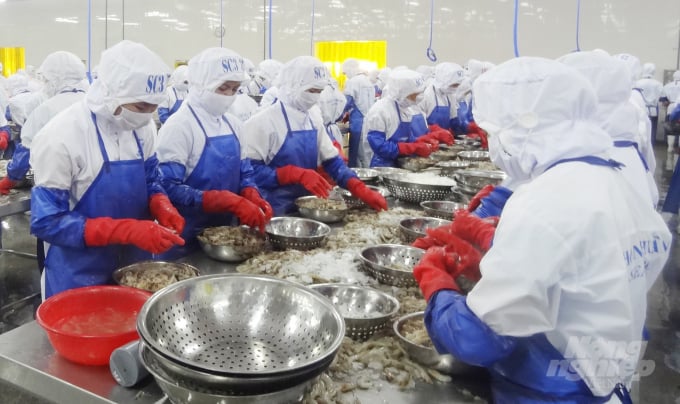
Processing shrimp for export at a factory in Ninh Thuan province. Photo: Thanh Son.
In the last months of 2021, Vietnam's shrimp exports are generally in favorable conditions. Most of the leading markets for Vietnamese shrimp are recovering thanks to a vaccination rateation in the community and the Government's post-Covid-19 support packages.
Business services, restaurants, hotels, tourism... are gradually reopening in many markets. Therefore, demands for food will increase sharply by the end of this year, especially the need for seafood in general and shrimp.
In addition, due to the Covid-19 epidemic's impact, consumers tend to prefer deeply processed foods convenient for the fastest cooking.
Deep processing is a competitive advantage of Vietnam's shrimp industry, with many factories with modern equipment systems, ensuring high requirements for food safety and skilled workers.
Specifically, Vietnam's shrimp deep-processing industry will avoid increasingly strong competition from India and Ecuador. These two countries have strengths in raw shrimp or semi-processed shrimp for export due to the abundant and cheap raw shrimp resources.
It can be said that the current market's consumption demand has also created favorable conditions for Vietnam's shrimp industry to promote deep processing, thereby maintaining its market share in important markets.
According to some experts, the shrimp in stock in many large exporting countries is currently not much, in the context of significant festivals approaching Christmas and New Year 2022. Therefore, shrimp import demand will increase, and shrimp prices will go up in the last months.
Over time, factors such as the Covid-19 epidemic and weather have affected shrimp supply in many leading shrimp exporting countries. For example, in India, the supply of large shrimp has dropped due to bad weather, and the breed quality has affected the shrimp farming process.
The supply of white-leg shrimp in India also decreased. If not improved soon, the shortage of raw shrimp in this country may last until March next year.
In Ecuador, high production and export costs also affect the competitiveness of shrimp exports. Countries with the same level of deep processing from shrimp as Vietnam, such as Thailand, Indonesia, etc., have all been greatly affected by the Covid-19 pandemic.
As forecasted, the global shrimp supply in the last months of the year will decrease. As a result, shrimp prices will rise, especially for large-sized shrimp.
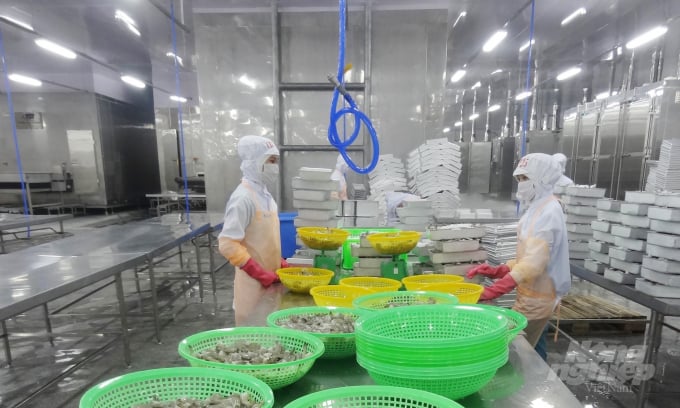
Preliminary processing of shrimp before processing. Photo: Thanh Son.
A favorable market is essential for the Vietnamese shrimp industry, especially shrimp processing and exporting enterprises in the Mekong Delta, to recover after the prolonged social distancing period quickly.
However, in the past few days, the appearance of many Covid-19 infections, and new outbreaks in the Mekong Delta provinces, especially in seafood processing enterprises, are putting significant pressure on companies to ensure safety and stable production.
Dr. Ho Quoc Luc, former Chairman of VASEP, Chairman of the Board of Directors of Fimex VN, said that only when the Covid-19 epidemic is controlled, businesses can rest assured to focus on business and restore production.
Meanwhile, up to now, the rate of one vaccine injection in the Mekong Delta is still relatively low. Therefore, it is essential to promote adequate vaccination of workers throughout the shrimp production chain.
Therefore, Mr. Luc said that businesses need to have enough facilities and conditions for testing, thereby conducting medical screening for all employees, even buying themselves Realtime PCR for the Covid-19 test.
In addition, businesses must have a department that regularly analyzes hazards that are epidemic or HACCP. In particular, it is necessary to pay attention to the team of long-distance drivers. The supply of raw materials, supplies, and food must ensure safety and limit the spread.
The Vietnam Association of Seafood Exporters and Producers (VASEP), said that despite a sharp decrease in August and September due to the epidemic, in the first nine months of this year, shrimp exports still grew when reaching US$ 2.8 billion, up 2.7% over the same period last year.
Among the five largest markets of Vietnamese shrimp, the US is the largest and has the best growth rate when reaching US$ 775 million in the first nine months, up 22.2% over the same period last year and accounting for 28% of total shrimp export value. Vietnam is currently the 4th largest shrimp supplier in volume and 5th in value to the US market.
The second-largest shrimp exporter in Vietnam is Japan, with US$ 413 million. Next is the EU with US$ 408 million, China - Hong Kong with US$ 298 million, South Korea with US$ 261 million.
White-leg shrimps continue to be the essential export product of Vietnam's shrimp industry, with an export value of more than US$ 2.1 billion in the first nine months of the year. Next is black tiger shrimp with US$ 422 million, sea shrimp with US$ 208 million.
According to the Import-Export Department (Ministry of Industry and Trade), the Covid-19 epidemic in the southern provinces is gradually being controlled. As a result, Vietnam's shrimp exports will recover progressively from October 2021.
In the fourth quarter of 2021, the import demand of European countries, the US, will sharply increase. Besides, the shrimp industry also has many advantages because shrimp prices in the market tend to grow. Raw shrimp prices in most major producing countries such as India and Indonesia also increased due to the shortage of production materials.
Translated by Ha Phuc
/2025/05/22/5250-1-184853_288.jpg)
(VAN) According to a representative from the Central Retail Vietnam, Vietnamese products such as seafood, sweet potatoes, dragon fruit, coffee, and spices hold great potential in the Thai market.
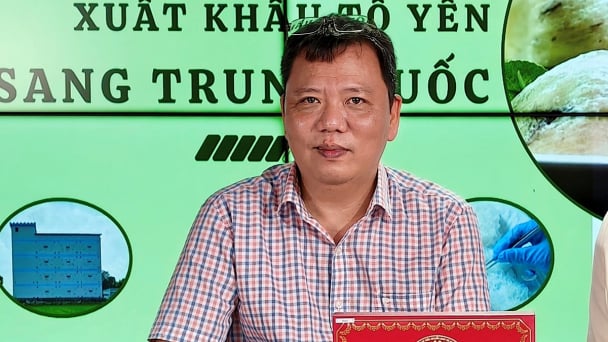
(VAN) A multi-channel, multi-directional strategy only works when the agricultural value chain meets global transparency and SPS standards.
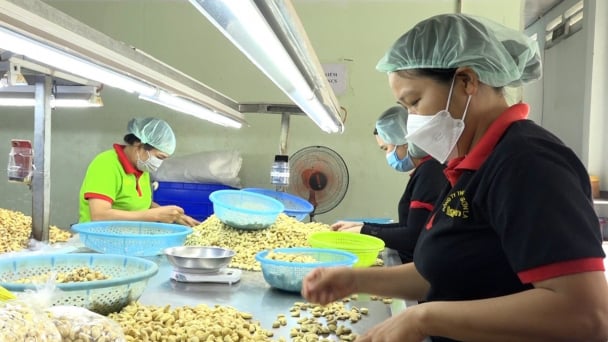
(VAN) Market expansion is a matter of survival for Vietnamese businesses amid fierce competition and global supply chain fluctuations.
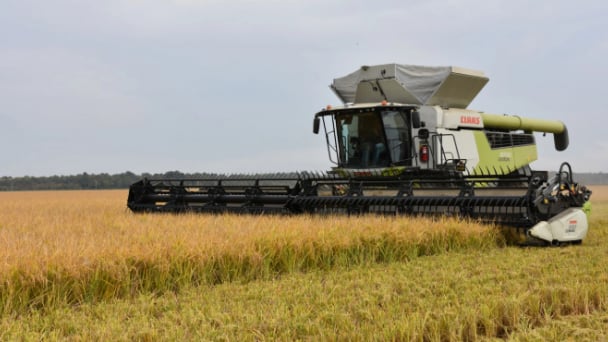
(VAN) Global market prospects for U.S. long-grain rice for the upcoming marketing year.
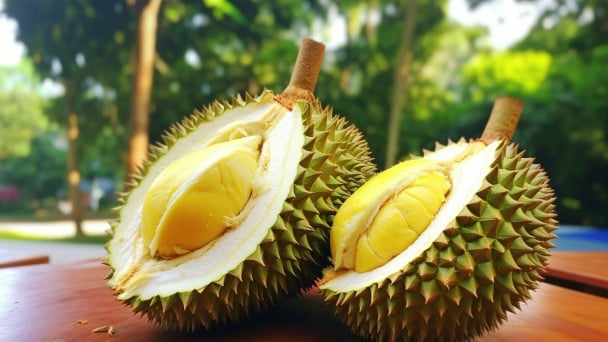
(VAN) China’s General Administration of Customs started permitting fresh durian shipments from Cambodia after a phytosanitary protocol was signed with the Cambodian Ministry of Agriculture in late April.
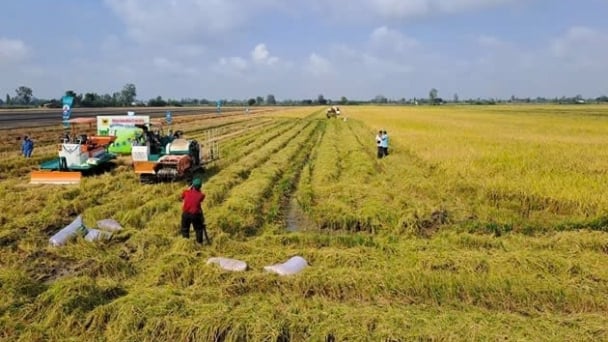
(VAN) To operate carbon market, one of the key issues is determining which types of 'commodities' meet the standards to be traded on the market.
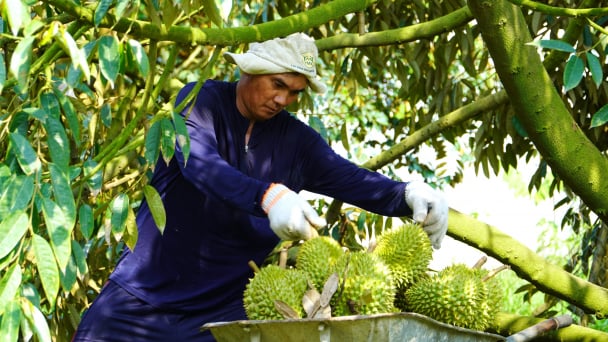
(VAN) Durian-producing localities need to coordinate more effectively with central authorities to improve the traceability, monitoring, and response systems in case of violations.